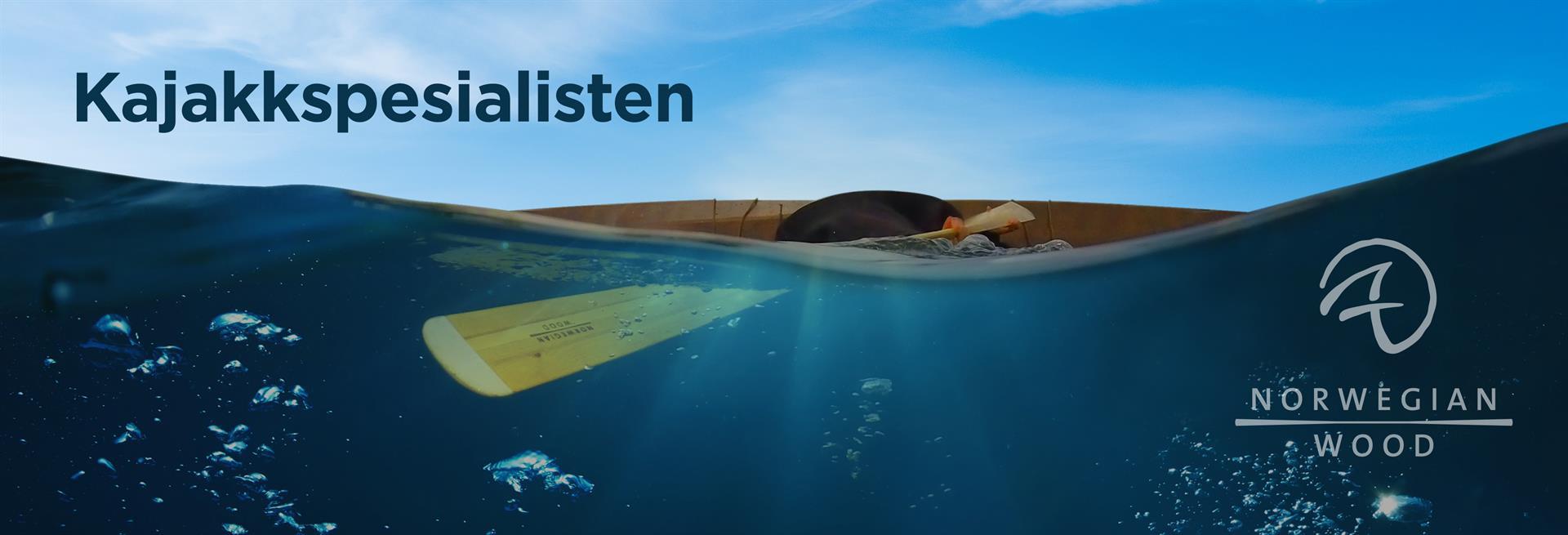
West Greenland kayak
The West Greenland kayak is perhaps the most well-known type of kayak. It's a well-rounded trip- and sea kayak, and most modern fibreglass and plastic kayaks are based on this design. The West Greenland kayak is also spacious enough for trips lasting multiple days, while at the same time being short enough for precision manoeuvring, sporting or Eskimo rolls. The kayak lines are also important, just as the stability and seaworthiness are. It's a fast kayak, easy to paddle, and the first choice of by far the majority of those who want a frame-and-skin kayak.
Weight: Approximately 16 kg when covered with cotton canvas, lighter when covered with nylon/polyester skin. Length and width are tailored to the owner/buyer.

South Greenland kayak
Unsurprisingly, the South Greenland kayak may seem like a hybrid of the East and West types. The construction process resembles the western one, but the kayaks are smaller and thinner and look more like eastern kayaks. The frame itself is different, though, more like a West Greenland kayak, with a combination of hard, single chine and a flat bottom. This makes the South Greenland kayak more well rounded and less demanding to paddle than the East Greenland kayak, and a sensible choice for those who want an elegant little kayak that's easy to paddle.
Weight: Approximately 16 kg. When covered with cotton canvas, lighter when covered with a nylon-polyester skin. Length and width are tailored to the owner/buyer.
Common features and details
West- and south Greenlandic designs have a lot of similarities. The building method is the same, and the designs are not that far apart. The weight is low and can be even lower if it is covered with nylon/polyester fabric. The cockpit size varies, and will always be tailored to the person who is going to use the kayak. They can be either tiny or really large. Hatches are a good option if you wish to do kayak touring and need to bring luggage. However, luggage can also be stowed through the cockpit. If you take a building class, hatches will be an option you can choose. Hatches can also be added later if the demand should arise.
I always recommend standard deck rigging. That will enable you to do easy self-rescues with your paddles as outriggers. If you want to paddle on deep water, the sea sock is mandatory. It makes your kayak stay afloat if you exit it after a capsize. Even better than bulkheads do in modern sea kayaks. Rigging and a sea sock are always included in custom-built kayaks and are also included in the kayak building classes. You will never need a rudder in a Greenland style kayak. You steer it easily with your body and your paddle. However, for long-distance paddling in windy conditions, I recommend a detachable skeg. This is always included in custom-built Greenland kayaks, and if you join a class, you also get the materials for this.




